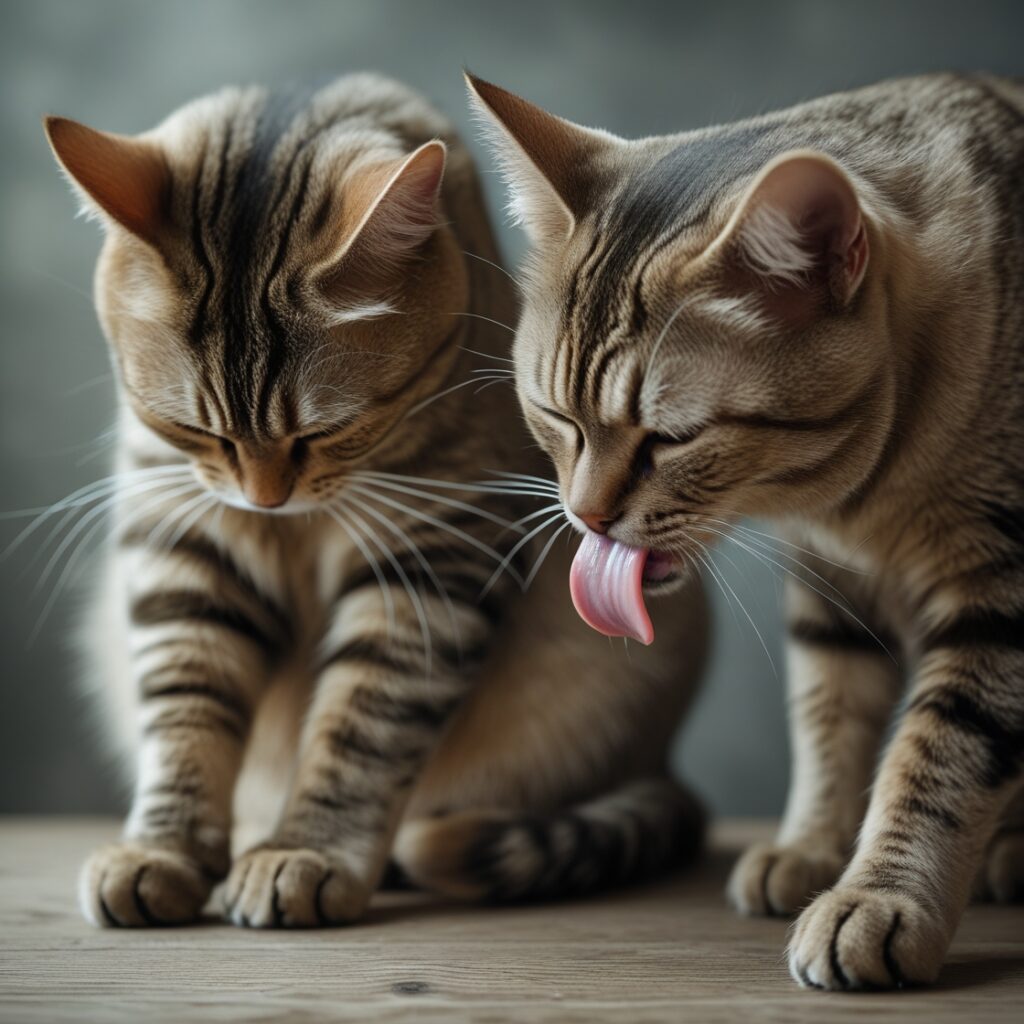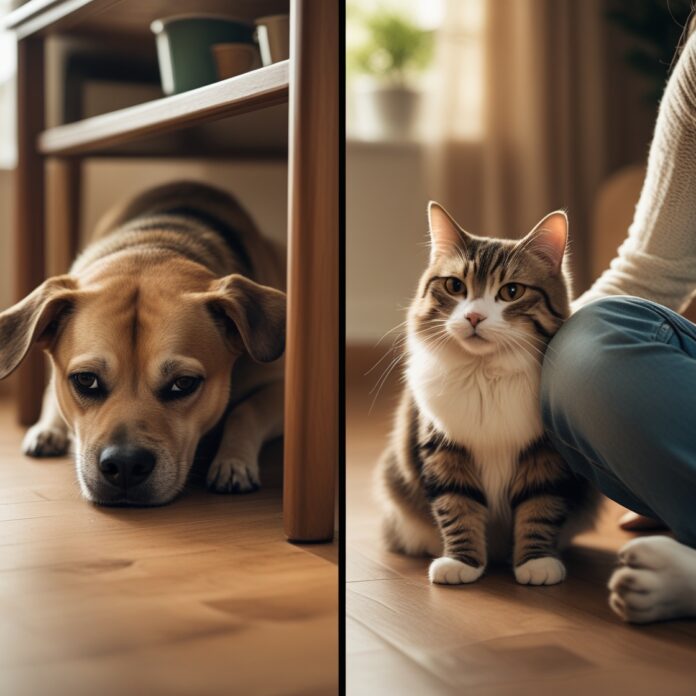Just like humans, pets experience stress—and sometimes, the signs are more subtle than you’d expect. Whether you have a dog, cat, or rabbit, it is important to understand pet stress for the mental and physical wellness of your pet.
A pet’s behavior changes when they’re stressed or overwhelmed. They might withdraw, become destructive, or even develop physical symptoms. In this guide, we’ll explore the 7 most common signs of pet stress and how you can help your furry friend feel better.

1. Changes in Eating Habits
One of the first signs of pet stress is a sudden shift in appetite. Stress can suppress a pet’s hunger, leading to skipped meals. On the flip side, some pets may start overeating as a coping mechanism.
If your dog who usually rushes to their bowl suddenly ignores it—or your cat turns away from their favorite treats—take note. This could indicate an emotional issue that’s interfering with their eating behavior.
2. Excessive Grooming or Shedding
Grooming is normal behavior, especially in cats, but excessive licking or biting can signal something deeper. As a form of self-soothing, stressed pets frequently overgroom. You may even notice bald patches or irritated skin.
Dogs may lick their paws raw, while cats may spend hours obsessively cleaning a specific area.

3. Aggressive or Withdrawn Behavior
A pet that becomes snappy or withdrawn is likely experiencing emotional turmoil. Dogs might growl or snap, while cats could hiss or hide under the bed. When they are overstimulated, even the most loving pets may withdraw.
Look out for sudden disinterest in toys, avoiding interaction, or even aggression toward familiar people or other pets.
4. Excessive Barking or Meowing
If your pet suddenly becomes vocal—especially at odd hours—it might be their way of crying out for attention or signaling distress. Dogs may bark excessively when left alone, and cats may meow more frequently when they feel anxious or disoriented.
Take note of the vocalization’s timing and purpose. There is a strong likelihood that stress is at play if it is connected to particular individuals, settings, or times of day.

5. Destructive Behavior
When pets feel stressed, they often act out. Cats may paw at couches or knock things off shelves, while dogs may chew on shoes or furniture. This is a reaction to pet stress, especially if it occurs while the pet is left alone, and is not considered “bad behavior.”
This kind of destruction is often associated with separation anxiety, a common condition in pets.
6. Hiding or Seeking Isolation
If your usually outgoing pet starts avoiding you or hiding, it’s worth investigating. Isolation is a natural reaction for many animals under stress. Cats may crawl under the bed, while dogs might hide behind furniture or under tables.
Keep an eye out for body language like as tucked tails, flattened ears, or a low, crouching position.

7. Restlessness or Sleeping More Than Usual
Stress can disrupt sleep patterns. Your pet may seem unable to settle, pace, or circle their bed a lot. Conversely, some pets respond by sleeping more as a form of emotional withdrawal.
This shift—especially when paired with other signs—is a strong indicator that your pet is struggling emotionally.
How to Help a Stressed Pet
What can you do now that you are aware of the signs? To help a worried pet, behavioral and environmental adjustments must be made:
- Establish a peaceful environment: Make sure your pet has a place to go to when they’re feeling stressed.
- Stick to routines: Pets thrive on consistency. At the same times every day, feed, stroll, and play.
- Offer enrichment: Interactive games, puzzles, and toys help refocus anxious energy.
- Exercise: A tired pet is a happy pet—physical activity helps burn off stress.
- Use goods that promote relaxation: Things like anxiety wraps and pheromone diffusers may be helpful.
- To rule out physical problems and investigate therapies such as vitamins or behavioral therapy, it is always advisable to seek advice from your veterinarian.
Final Thoughts
Pet stress is more common than many realize. Nevertheless, by monitoring minor behavioral changes, including changes in energy, eating, or grooming, you can take action before the stress becomes a bigger problem.
Your pets rely on you to understand what they can’t say. Being attuned to their emotional needs makes you not only a better pet parent but also their trusted source of comfort.



